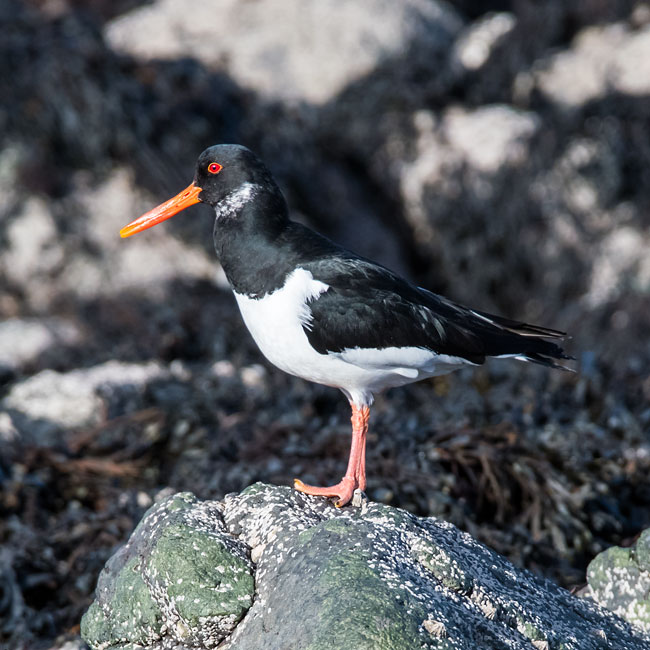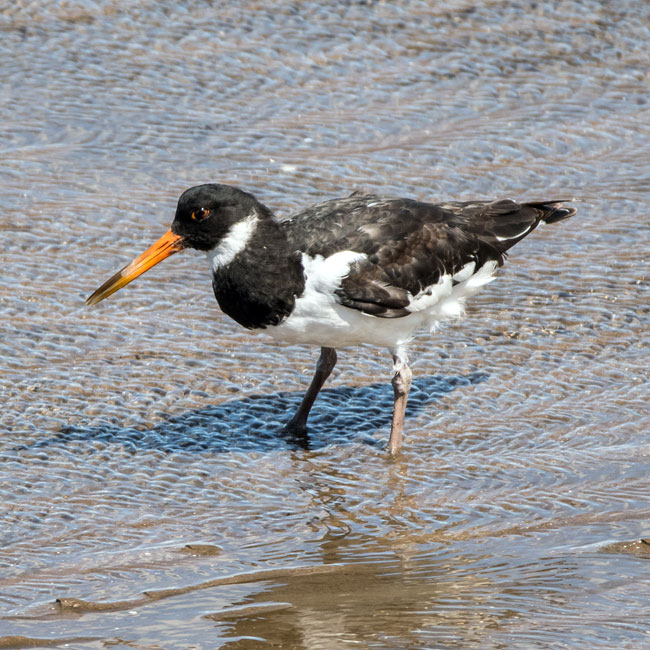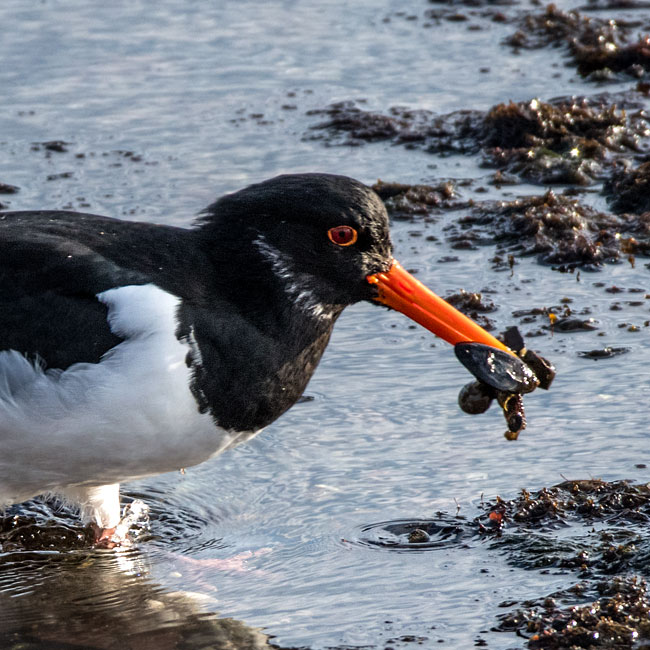
| Oystercatcher |
|
| Taken at Musselburgh on 6th March 2025 using Nikon Coolpix P950 |

| Taken at Luce Bay, Rhins of Galloway on 31st May 2022 using Nikon D500 with Sigma 600 mm zoom lens. |

| Taken at Yellowcraigs on 16th February 2020 using Nikon D500 with 600 mm zoom lens |  |

| Taken at Troon on 23rd October 2016 using Nikon D5200 with Sigma 600 mm Zoom lens. Attached: Sigma 1401 Teleconvertor lens |  |

| Juvenile Taken at Musselburgh on 13th June 2021 using Nikon D500 with Sigma 600 mm zoom lens. |
 |

| Taken at Musselburgh on 25th April 2021 using Nikon D500 with 600 mm zoom lens. |  |

| Taken at Port Seton on 12th January 2020 using Nikon D500 with Sigma 600 mm zoom lens. |  |

| Lunch Taken at Saltcoats on 19th January 2020 using Nikon D500 with Sigma 600 mm zoom lens. |
 |

| Taken at Musselburgh on 8th March 2018 using Nikon D5200 with Sigma 600 mm zoom lens. |  |


| Oystercatcher. |
| Species: Order: Family: Local Names: |
Haematopus
ostralegus. Charadriiformes. Haematopodidae. |
| Site Of Nest: Materials: Food: Plumage: Length: Breeding Period: Eggs: |
On the
coast or on inland gravelly islands. None. Just a scrape on the ground. Mussels and cockles on the coast; mainly worms inland. Either all-black, or black (or dark brown) on top and white underneath. The bill shape varies; oystercatchers with broad bill tips open molluscs by prising them apart or hammering through the shell, whereas pointed-bill birds dig up worms. Much of this is due to the wear resulting from feeding on the prey. Thus when birds move inland to breed and thus shift from feeding on molluscs to worms their bill shape changes from flat to pointed. Legs are Red. 39 - 44 cms. Mid-April. 2 - 4 (but usually 3) cream eggs, spotted with brown. |
| Voice |